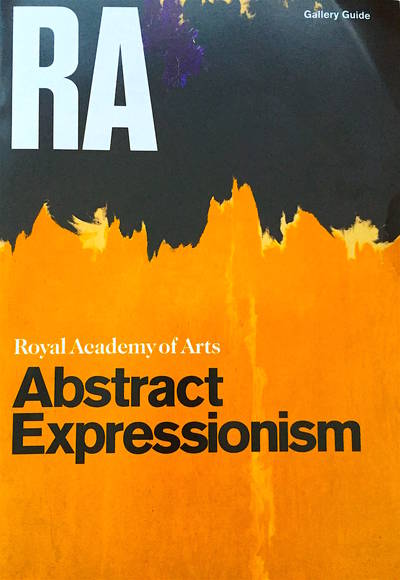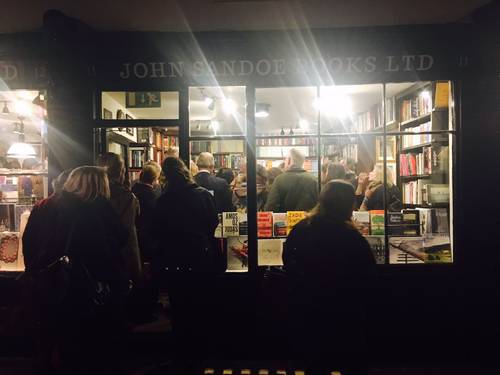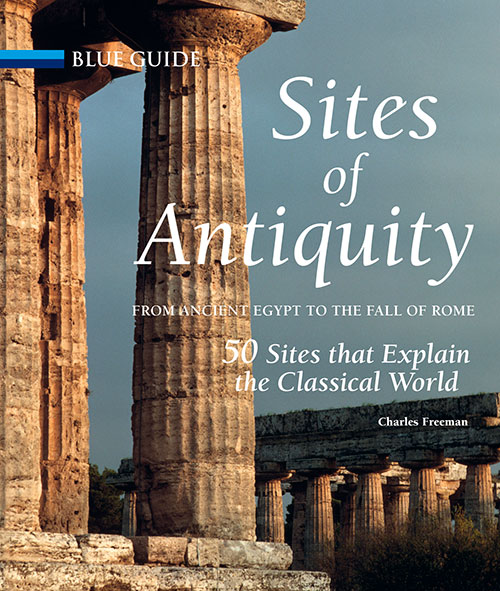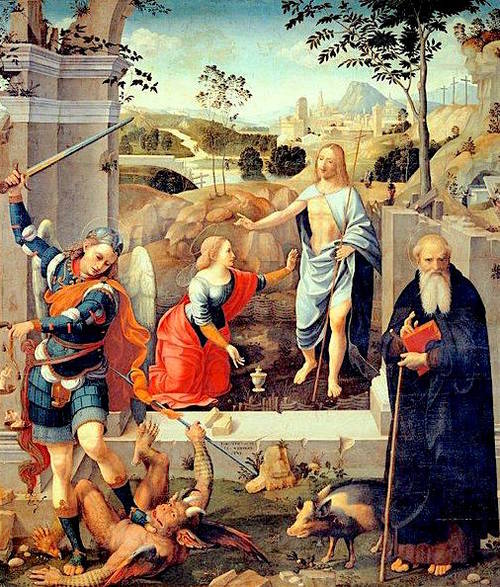by Christopher de Hamel.
How does one “meet” a medieval manuscript? The examples explored in this book are such celebrities that effecting a face-to-face encounter needs a lot of arranging. It helps if you are a world authority like Christopher de Hamel. Having worked for years at Sotheby’s, he has handled more illuminated manuscripts than anyone else alive. Since 2000 he has abandoned the buzz of commercial sales for the librarianship of the Parker Library in Corpus Christi, Cambridge, the books and manuscripts bequeathed by Matthew Parker, a former Master of the college and Archbishop of Canterbury under Queen Elizabeth I.
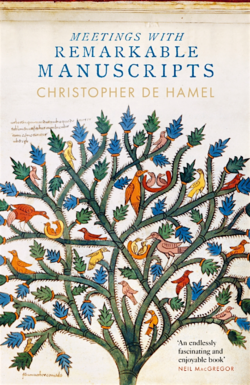
It is here that he introduces us to the first of his manuscripts. Small and rather battered, it is a very early set of the gospels (in the Latin Vulgate of St Jerome) and a deeply moving document in that it may well be the very copy sent by pope Gregory the Great to Canterbury with the monk Augustine in 597. De Hamel lists the circumstantial evidence for the provenance, is largely convinced, but then leaves the question open. Then he produces his clincher: an analysis of the Latin shows phrases from a pre-Vulgate Latin version that Gregory found superior to that of Jerome. If this is right, the Gospels is the founding document of Christianity in England, provided as a gift by one of the great popes of the Middle Ages. For Parker the Gospels was especially important as a relic of an original Anglican church that had now been restored to its independence under Elizabeth. He probably found the manuscript in the library of the dissolved monastery of Augustine in Canterbury.
The Gospels of Saint Augustine is the first of the wonderful manuscripts to which we are introduced. They are chosen from century to century, a total of twelve over a thousand years, so that we learn not only about the manuscripts themselves but about the changing world that produced them, the Carolingian Renaissance of the 9th century, the shift in commissioning from monasteries to royal families in the 12th, and the retreat into private prayer from the 14th century onwards that inspired some of the most opulent manuscripts of all, the Books of Hours. While most of the chosen few are religious texts, there is an extraordinary 9th-century copy of a Classical picture book of the constellations, the Aratea (named after the 4th-century BC astronomer Aratus of Soli), as well as a collection of drinking and love songs (the 13th-century Carmina Burana), and one of the earliest texts of Chaucer’s Canterbury Tales, the Hengwrt Chaucer, now in the National Library of Wales.
Some of the choices are so famous that they have become ‘iconic symbols’ of a nation. Such is the Irish Book of Kells, the only one of the manuscripts here that I have seen myself, with its intricate and delicate embroidery of illustrations. Others have to be dug out. Meeting the Visconti Semideus, a treatise on armaments and warfare presented to Filippo Maria Visconti, Duke of Milan, in 1438, now in St. Petersburg, requires getting a visa for Russia, having one’s passport examined at the entrance to the library, photographs taken, papers stamped, long corridors to the reading room traversed and eventually this fine manual handed over for inspection. By now we have reached the Renaissance, and Classical allusions fit alongside exhortations to reconquer the Holy Land for Christendom. The original owner, Filippo Maria, is not named after the apostle but after Philip of Macedon, the father of Alexander the Great. As de Hamel passes lunchtime without refreshment, a middle-aged woman with outsized glasses, ‘a saint among manuscript librarians’, takes pity on him and feeds him whisky-flavoured Russian chocolates.
When he meets his manuscripts, de Hamel quickly establishes an intimate relationship with them. They have no chance of hiding their blemishes, ‘erasures, scratches, overpainting, offsets, patches, sewing-holes, bindings and nuances of colour and texture’ that have often been concealed in reproductions. But he is a kindly man, forgiving of the manuscripts for the scrapes (I use the word literally as some surfaces have been scraped off the parchment ) that they have endured. They, and he, must be relaxed enough for their story to be told. They cannot conceal the style of their illuminations or the script of their text, and their origin and history is often marked by the dedications and the names of later owners—but they more than hold their own and some keep their secrets to themselves.
Much else is dependent on careful detective work. So the hand of the artist of the ‘Hours of the Virgin’ section of the Hours of Jeanne de Navarre is found across a range of illuminations from the middle of the 14th centurywhose patrons are known. There is only one illuminator who, records show, worked for all these patrons, Jean le Noir, the ‘illumineur du roi’ and de Hamel concludes that the Hours (still in Paris in the Bibliothèque Nationale) were the gift of king Philippe VI to Jeanne, daughter of Louis X, king both of Navarre and France.
There has been an attempt to ascribe the manuscript of the Hengwrt Chaucer, the next manuscript to be met, to one Adam Pinkhurst whom Chaucer had urged to copy his texts more carefully. Pinkhurst is indeed recorded as a scribe, the dates fit and there is some resemblance between the scripts ascribed to Adam and that of the Chaucer. De Hamel thinks long and hard and finally decides they are not one and the same. In recompense he leaves the National Library clutching a mug and coasters bearing the illustrations he has just been studying in the original.
There is so much to treasure here. One can follow the intricacies of the Book of Kells for hours. I was fascinated by the planetarium from the Aratea as it shows the planets Venus and Mercury in orbit around the sun (which is in orbit around the earth, as are Saturn, Jupiter and Mars). Quite by coincidence I had come across the view of the 9th-century Irish scholar Eriugena that the sun did revolve around the earth but the planets Jupiter, Mars, Venus and Mercury revolved around it. No doubt this hypothesis is common knowledge to historians of astronomy but it was quite new to me and I am grateful to de Hamel for giving me a source to put alongside Eriugena.
Tracing the increasing sophistication of the illuminations is a pleasure in itself. The illustrator of the Morgan Beatus, a 10th-century text of interpretations of the Apocalypse from Spain, has created a fun toy box of a Noah’s Ark, the animals shown on a series of shelves with the family at the top, Noah reaching up to the dove. Two hundred years later, in the opulent Copenhagen psalter, the figures are now full of emotional responses. Perspective arrives, the army of the Visconti march across mountain passes with valleys below. Colours become rich and one can even pick out details of clothing. The scenes of everyday medieval life in the Spinola Hours (now in the Paul Getty Museum high up on its flattened Los Angeles hillside) are particularly enchanting.
And so one could go on. Please put this book at the top of your Christmas wish list.
Meetings with Medieval Manuscripts, Allen Lane, 2016, reviewed by Charles Freeman
Also recommended: Stella Panyatova (ed.), Colour: The Art and Science of Illuminated Manuscripts, the catalogue of an exhibition at the Fitzwilliam Museum, June to December 2016, to celebrate its first 200 years. It has a wealth of information on the techniques of creating manuscripts.







